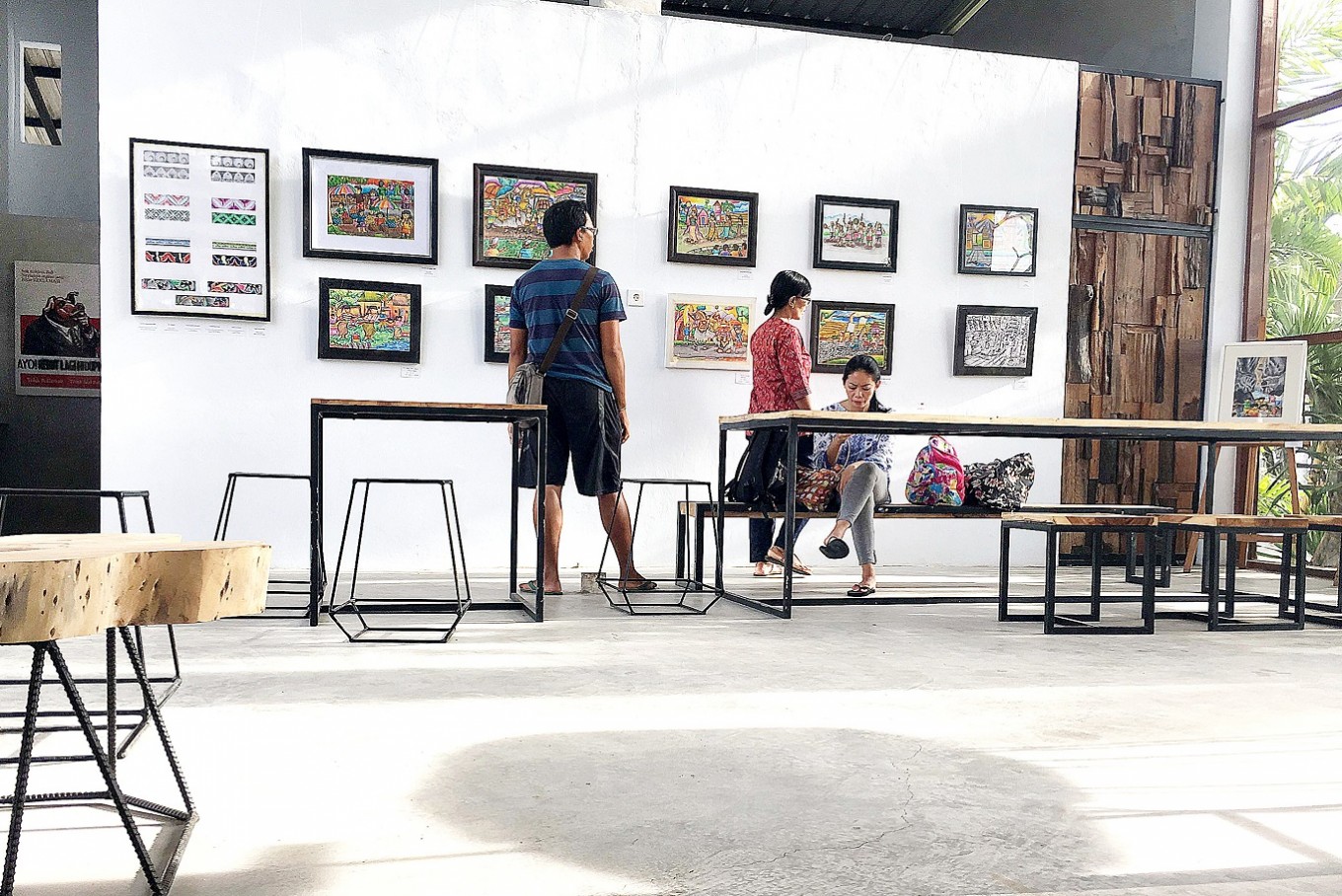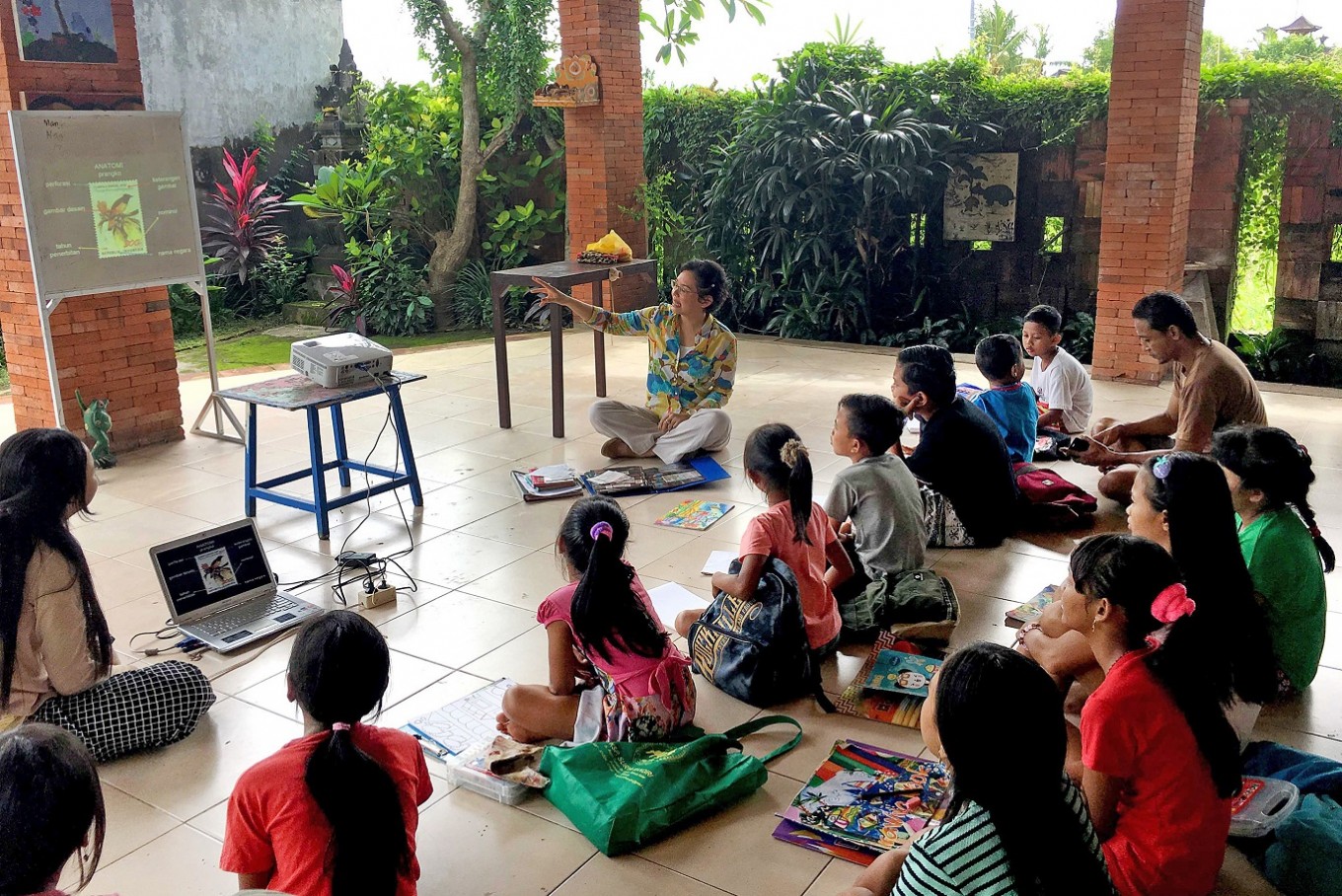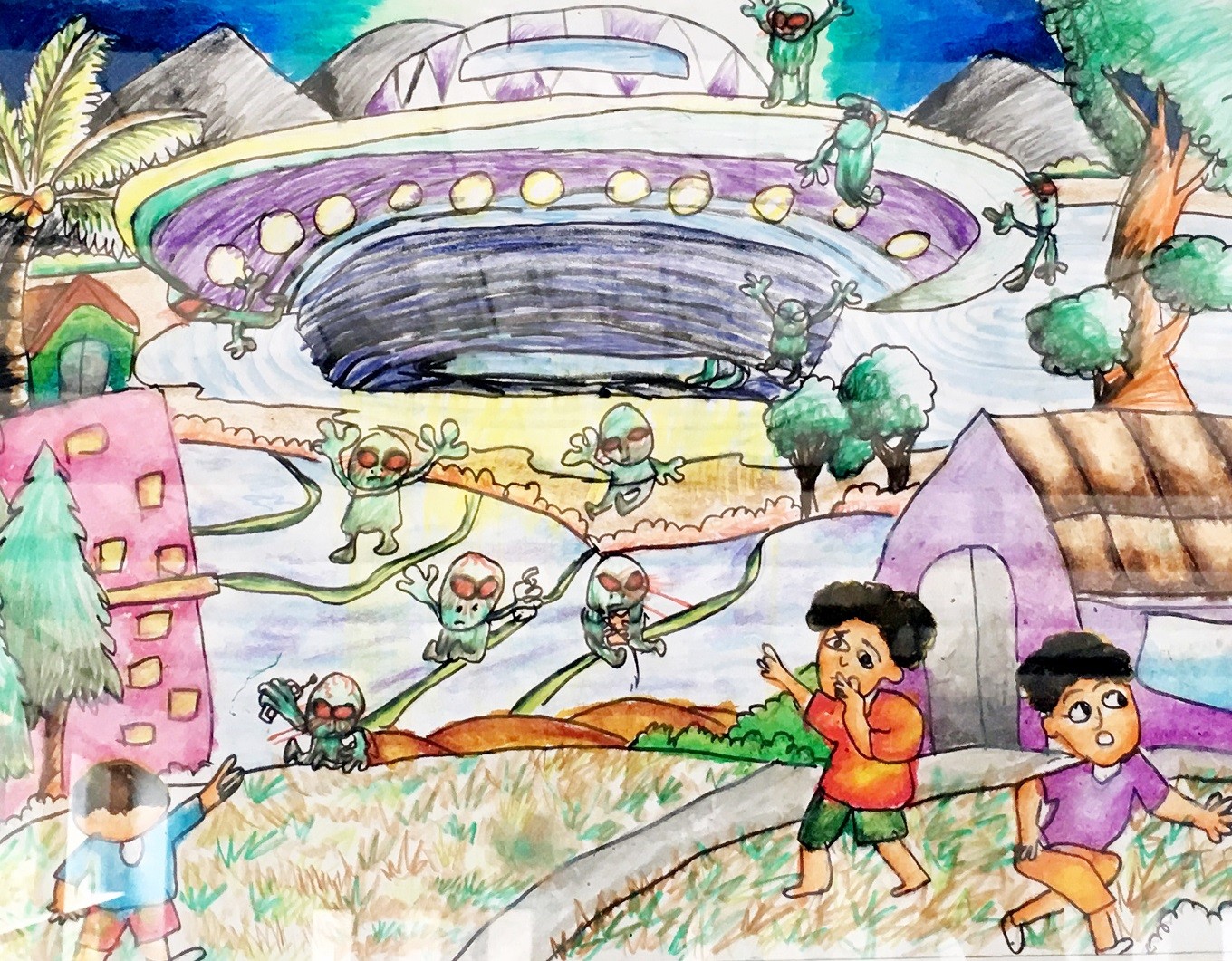It takes a village
A community-based initiative provides village kids with a richer learning experience.
Change Size
 Vision of strength: Visitors observe the paintings and drawings by Sanggar Anak Tangguh (SAT) children during an exhibition at Kulidan Kitchen and Art Space. (JP/I Wayan Juniartha)
Vision of strength: Visitors observe the paintings and drawings by Sanggar Anak Tangguh (SAT) children during an exhibition at Kulidan Kitchen and Art Space. (JP/I Wayan Juniartha)
T
he chatter of the children warmed up the otherwise quiet morning in the small open hall in Guwang, a village in Gianyar once famous for its woodcarving artisans.
The warm morning sun partially lit the hall, one of two structures in the lush compound that has served as the home for Sanggar Anak Tangguh (SAT), literally strong children community, since its inception in 2007.
SAT offers free educational sessions, ranging from English and math lessons to painting and plastic recycling workshops, to the village’s children. The sessions are provided by volunteer teachers, most of whom are natives of the village. Lessons are given every Sunday. The children were sitting on the floor of the hall. Some were busy drawing, while the others animatedly chatted with each other. They were waiting for a new teacher who would present them with fresh knowledge.

That teacher was Anak Agung Ayu Daninda, the head of the Bali and Nusa Tenggara chapter of the Indonesia Creative Philately Community (KoFKI). It was her first visit to SAT and immediately she was impressed by the enthusiasm displayed by the children.
In the following hour, Daninda explained to the children fascinating tidbits about philately as the children, most of whom had never seen, let alone touched, a stamp browsed through books of stamp collections, with tweezers and magnifying glasses brought by the teacher.
SAT’s co-founder Komang Adiartha sat alongside the kids, giving them encouragement to pose more questions to Daninda. In the northwest corner of the hall, another co-founder Cokorda Raka, stood with a wide smile on his face.
“Watching those young faces glow as they absorb new knowledge has always made me happy,” he said.

Cokorda Raka, who now manages some of Ubud’s most popular eateries, including Batanwaru, Cinta Grill and Siam Sally, was trained as a teacher and spent several years teaching English at a high school in Jakarta before returning to Bali.
“Upon returning, I and a couple of my friends here saw the need to provide additional education to our children. Living in the village means they don’t have the access to various aspects of knowledge and skills widely available to their city-dwelling counterparts.”
Raka and the other nine figures agreed to establish SAT. Co-founder I Nyoman Partha, a local politician who sits on the Bali Legislative Council, provided the land for the SAT compound while the other co-founders donated construction materials for the learning hall.
Read also: Iman Suligi: Literary hero for children
Amid his busy schedule in Ubud and his esthetic pursuit of wood sculpting — Raka is one of a few remaining woodcarvers in Guwang — he still finds time to provide English and math lessons to SAT children.
“My job in the hospitality industry provides me with connections to generous westerners, who assist SAT either by giving financial or material donations or by volunteering as teachers,”
In its early years, SAT had to deal with various reservations aired by the parents. One parent questioned the drawing and painting workshop regularly held there, telling the SAT teachers that the island did not need any more painters because of waning demand for such artworks.
“He did not realize that drawing and painting are just our way of encouraging the children to express themselves in the most comfortable and pressure-free way possible,” Adiartha said.
Read also: Study: Nearly 60 percent of children like reading for fun
On another occasion, an English teacher at the local school scorned SAT, doubting its ability to impart knowledge on the English language to the children since it had no classroom or certified teachers.
“We quelled his doubts by taking the children to the famous Monkey Forest in Ubud and filming them as they conversed with tourists, the footage of which we screened before the parents,” Adiartha recalled.
Ever since that SAT has grown into one of the most important community-based initiatives in Bali, having “graduated” more than 500 children and successfully maintained the support of the local community.
“Our operational costs are quite low because most of the expenses, such as for water and electricity, are paid by our neighbors,” Adiartha said.
To provide an additional source of income for SAT, Adiartha has just turned his family land into an art space cum restaurant. Called Kulidan, after the name of the local farming association, it will also serve as a discussion venue and display place for artworks created by SAT students and homeware furniture designed by Adiartha.
In early January, it hosted its premiere event: “Children Narrating Stories of Their Village”, a painting and drawing exhibition featuring the works of SAT children. Their works are a testament to not only the exhilarating dimension of children’s imagination — one Putu Perama drew a huge UFO landing in Guwang — but also to the esthetic freedom imparted by the teachers upon the students. One, Damar Langit, recreated the traditional image of the mythical bird Garuda with free lines and refreshing bold brush strokes.


The philately session ended and the children joyfully received their gifts of free stamps before running through the compound gate, along the alley that borders a vast, sun-drenched chili grove, and right into a nearby warung (food stall) for snacks and ice teas.
A glowing Daninda chatted with Adiartha, promising to return the following Sunday to teach the children how to use stamps to narrate a story, before bidding each other farewell. “We need more people to share their knowledge and experiences with the children here. Our mission is to enrich and to widen their horizons and we could use all the help we can get,” Adiartha said.









